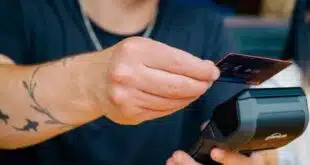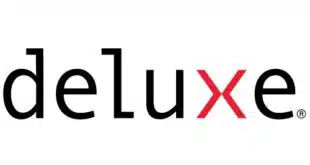Aided by an improving economy, credit cards staged a comeback in 2012, edging out debit cards as the key payment option at the retail point of sale, according to a new report from Javelin Strategy & Research.
While debit cards held the greatest share of total dollar volume at brick-and-mortar locations in 2011, slowly improving market conditions helped propel credit cards beyond debit last year. Credit cards held 32% of total retail POS purchase share with debit cards slightly behind at 30%, Pleasanton, Calif.-based Javelin says. The firm expects credit card volume to increase to $1.47 trillion through 2018, leading to an increase in share to 35%. Debit card volume, meanwhile, will increase to $1.32 trillion by 2018, resulting in a 32% share.
“If the economy stays somewhat healthy in the next few years, we can expect that consumers will continue to pick up their [credit] cards,” says Aleia Van Dyke, Javelin analyst and report author.
Javelin’s findings reinforce other research such as processor First Data Corp.’s recent SpendTrend reports that show a comeback for credit cards after tough times in the recession.
While credit cards are expected to continue to hold the top spot in dollar volume at the POS, mobile payments are expected to have the highest compounded annual growth rate over the next five years, coming off of a small base, Javelin says. Although mobile proximity payments made up just 0.01% of total POS volume in 2012, an industrywide push for mobile technology will help lift mobile POS proximity payments to $5.4 billion by 2018. That represents a 46.7% compounded annual growth rate.
“It’s building quickly but it’s still going to be an infant compared to more established payment options,” Van Dyke says.
Growth in mobile proximity payments is being aided by “a number of factors that are converging to really help drive this growth in mobile,” Van Dyke says, including technology advancements such as smart phones that give consumers the option of mobile payments.
“Suddenly, feature phones aren’t the common phone that people have,” she says. “People now are more likely to have a smart phone. It sounds so simple but people are having computers at their hands at any point.”
The implementation of the Europay-MasterCard Visa (EMV) chip card standard in the U.S. also is aiding the growth in near-field communications (NFC) transactions because the technology needed to enable contactless EMV chip transactions also can process NFC transactions with a phone, she says. By upgrading terminals, merchants will be able to support not only EMV, but also NFC.
Meanwhile, debit cards have overtaken cash as the preferred payment option for so-called Gen Y consumers, displacing cash, according to Javelin. The percentage of Gen Y consumers who reported that debit cards were their most frequently used payment vehicle increased from 29% in 2011 to 31% in 2012. Their use of cash decreased from 32% to 29%. Although credit cards represent a greater share of total dollars spent in retail, the rising popularity of debit cards with young consumers indicates an industrywide shift to electronic payment options, Javelin says.
Still, cash remains the most commonly used payment option for in-store transactions, even though its popularity is declining, according to the report. Eighty-one percent of consumers have used cash to make an in-store purchase in the past 30 days, compared with 83% in 2011. Cash will remain a popular payment option for years to come as it is the only payment option readily available to all consumers, Javelin says
General-purpose prepaid cards are quickly overtaking gift cards—closed-loop cards that can be used only at a specific merchant—in popularity, and prepaid card volume will surpass that of gift cards by 2015, according to Javelin. POS volume for gift cards totaled $145 billion in 2012 and is projected to decrease to $130.2 billion by 2018. That compares with in-store spending on prepaid cards of $120 billion in 2012. Volume on prepaid cards will increase to $158.5 billion over the next six years, Javelin predicts.
Prepaid cards often provide users with advanced online and mobile account-management features, and many prepaid cards are on par with traditional checking accounts, Van Dyke says. That makes them an attractive payment option for underserved populations.
The use of checks, meantime, is slowly declining at the point of sale, Javelin says, predicting that paper checks will decline in growth over the next six years, maintaining a negative 7.5% compounded annual growth rate and falling to a share of just 5% of POS payments by 2018. Checks have the highest average transaction size of any payment option used at the POS, but consumers don’t use them with the same frequency as other payment options.
Retail POS purchases totaled $3.98 trillion in 2012 and Javelin predicts they’ll reach $4.2 trillion by 2017. Online retail purchases totaled $318 billion and are forecast to hit $458 billion by 2017.
The report is based on data collected online form surveys of more than 6,000 consumers, with other data coming from government agencies, payment companies, and earlier Javelin research.
n
n





